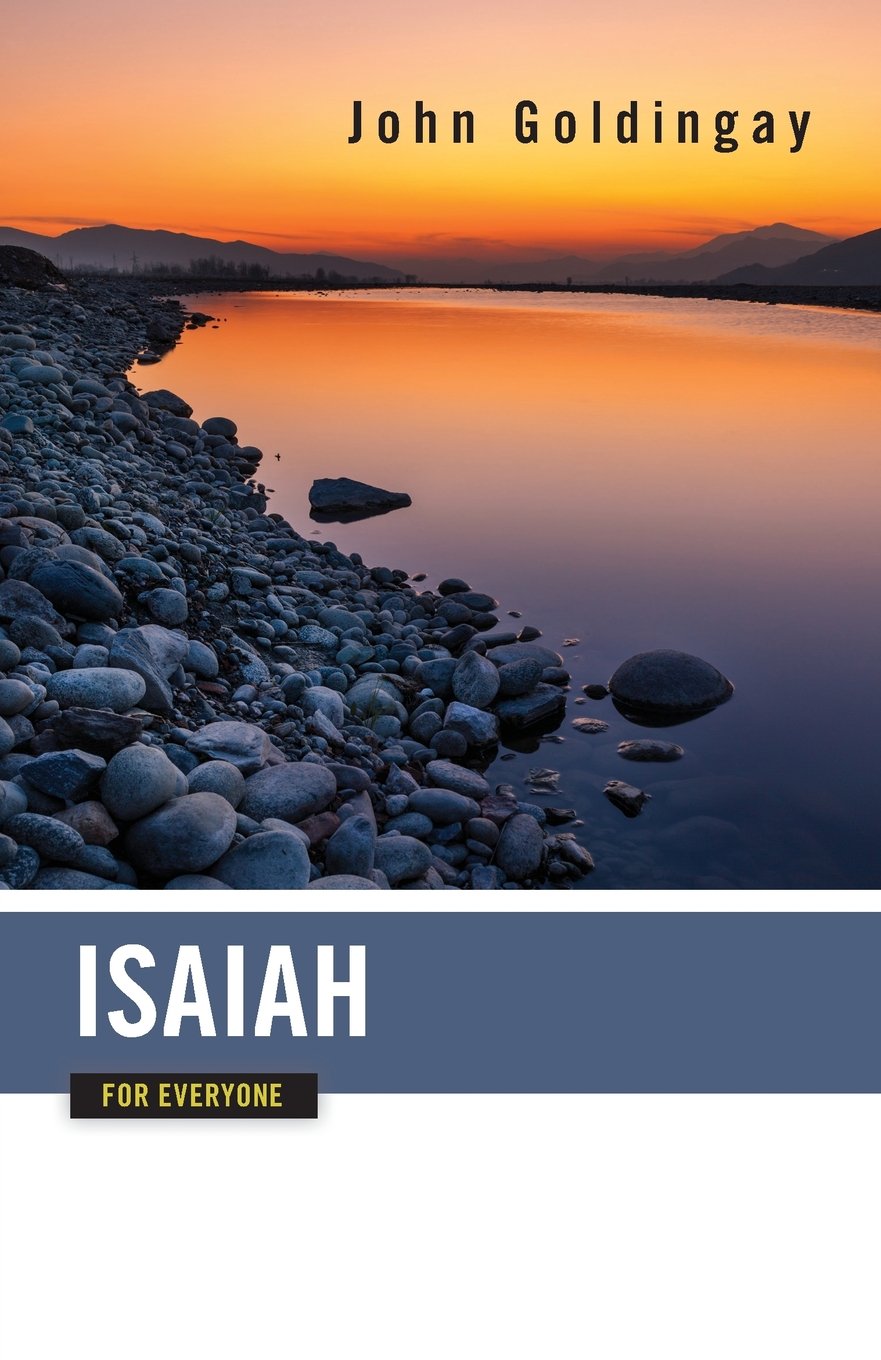 Isaiah for Everyone, by John Goldingay (Westminster John Knox, 2015), 260 pages.
Isaiah for Everyone, by John Goldingay (Westminster John Knox, 2015), 260 pages.
John Goldingay is no slouch in Isaianic studies. In 2005, he published The Message of Isaiah 40-55: A Literary-Theological Commentary. Last year, he replaced the old International Critical Commentary volumes on Isaiah by publishing the volumes on Isaiah 40-55 and Isaiah 56-66, and also published The Theology of the Book of Isaiah.
In this small book, Goldingay tries to make Isaiah accessible for everyone. He wants you not to fall into the trap of reading his commentary and skipping Scripture (1). That is a nice feature of this series: they include the full biblical text section by section. In this volume, there is usually about a chapter or part of a chapter per section. The section is followed by Goldingay’s commentary on the passage along with some practical application. The end of the book includes a glossary of terms that he uses throughout the volume, which he puts in bold when he uses them.
This volume was interesting. My wife and I used it for devotional reading together for a while to try it out in the setting it’s meant for. We felt like the first few chapters were insightful as far as digging out the main point of the passage and finding a way to illustrate it and apply it to Christians. The explanation of the text was a little sparse, but we were able to fill in some gaps by talking about it together. It generated a bit of discussion, but not as much as a volume with well-crafted discussion questions or more points of application.
But after a while, the volume began to fall short of an effective book for practical reading of Isaiah for various reasons.
First, the language is a bit idiosyncratic. The translation of Isaiah comes from Goldingay, who makes pretty wooden translations. Sometimes the translation was so wooden that we had to re-read a verse several times just to figure out what it was saying. Moreover, Goldingay uses some pretty idiosyncratic language that we had to turn to an English dictionary for more than once to figure out what this or that strange word meant (e.g., demureness [29], comeuppance [39]). For the most part, he writes simply and clearly, but the odd language interspersed throughout can be a turnoff for lay readers.
Second, the format of the commentary and application is repetitive. After each section of Isaiah, Goldingay begins with a personal story that relates to the main idea of the passage. This was attention-grabbing the first few times he did it, but after a few chapters it became monotonous. Sometimes, the stories were a bit of a stretch to fit the point of the passage as well, as he even acknowledges at least once. I suspect if he drew from a wider pool of stories or illustrations and didn’t always lead off with the story, the commentary sections may have been more engaging.
Third, academic issues imposed themselves too often. In the introduction, Goldingay notes that he holds to a redaction view of Isaiah. That’s fine for an academic commentary, but probably not the best place to introduce to laymen in one page of explanation. I remember the inner turmoil I experienced in seminary when I first learned about Q and redaction theories of the Gospels. I suppose laymen could be similarly disturbed to be told Isaiah didn’t write or speak all the words in Isaiah (and Goldingay gives no arguments to the contrary, which many scholars still make).
Another example is when he comments on Isaiah 7. A Jewish lawyer wrote a book about how Christians misuse the OT to prove Jesus is the Messiah. Goldingay notes that he “got in trouble with a number of Christians for acknowledging that he was right” (32). He proceeds to explain Isaiah 7 in its context and then notes that “Matthew can utilize the words in Isaiah to help his Christian readers understand something of the wonder of that event” (34). Of course that misses the fact that Matthew views Immanuel as a fulfillment of Isaiah 7. Goldingay may be correct that Isaiah 7 is not a direct prophecy about Jesus’ birth, but he does not seem interested in the typological interpretation of the passage, a hermeneutical method that goes back to Paul and was defined clearly by Justin Martyr.
Once again, in seminary a professor of mine told us we can’t trust those “Fulfilled Prophecy” charts in our study Bibles. But he, like Goldingay, was unable to provide an explanation of why the NT authors viewed these events as being fulfilled. When I learned about typology and other means of connecting the two testaments, my conscience was finally eased and the testaments began falling together. One should be aware that Goldingay isn’t as much into these historic and well-tried hermeneutical methods, as one can see from his intriguing book Do We Need the New Testament.
In conclusion, as a PhD student and professor, I enjoyed working through this book for some practical insights here and there, as well as some clear explanation of passages. I learned some things about Isaiah I did not know before, which is to be expected from such an eminent professor such as Dr. Goldingay. But the devotional experience fell a bit short for reasons listed above. I would suggest that, in an age of such specialization, we may need to utilize one another more for each other’s strengths. A co-author who pastors and specializes in both devotional application and cultural appraisal would be able to bolster this type of volume a great deal. But I thank Dr. Goldingay for spending his labors for the church, and I have no doubt many will benefit from this book in many ways.
Find it here on Amazon.
